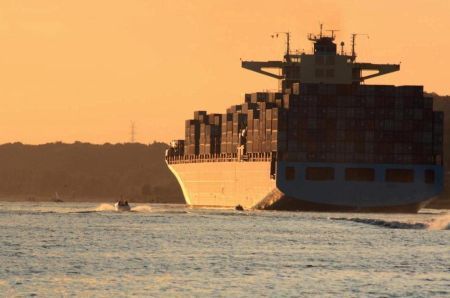
As the container shipping industry recuperates from a challenging market environment, concerns still abound over the looming overcapacity as more new vessels are expected to come on stream in the next two to three years.
CMA CGM group senior vice-president for Asia Europe lines Nicolas Sartini told StarBiz that the two main markets in the liner industry – Asia-Europe and Trans-Pacific trade – have entered their peak season.
“Volumes are strong, resulting in rate restoration programmes successfully being implemented. This situation should prevail until end-October.
“With the start of the peak season, the overcapacity does not appear to be a big concern for the time being. As usual, carriers would have to deal with this when the slack season begins. Then, it would make sense to suspend seasonal services and idle vessels on several trades,” he said.
Maersk Line chief trade and marketing officer Vincent Clercsaid supply as of today was not significantly out of sync with demand.
“However, the industry would phase in a 69% increase in the fleet of vessels above 10,000 20-ft equivalent units (TEUs) over the next two to three years.
“This would not be matched with a corresponding increase in demand and thus, new deployment opportunities would have to be created for these vessels, or the vessels that would be made obsolete by their deployment,” he said.
He added that this would put pressure on infrastructure to build facilities that could accommodate bigger vessels, and on the lines to co-operate to create cargo flows that could support them.
“Smaller vessels would be made obsolete prematurely because their operating cost would simply not be competitive anymore,” he said.
On freight rates, Sartini said the rates, especially on the Asia-Europe trade, had dipped to unnecessary low levels.
“No one benefits from the instability in freight rates which is prevailing – the carriers need to achieve decent returns to continue to invest on vessels and containers
“And the customers are looking for stable freight rates to get visibility on costs in their supply chain,” he said.
Nevertheless, the big boys –Maersk, CMA CGM – and another liner company, MSC Mediterranean Shipping Company SA, have recently agreed to establish a long-term operational alliance on East-West trade, called the P3 network, with the aim of improving and optimising operations and service offerings.
The P3 network will operate a capacity of 2.6 million TEUs, with an initial 255 vessels on 29 loops to be deployed in three main trade lanes – Asia-Europe, Trans-Pacific and Trans-Atlantic.
The network is expected to provide customers with more stable, frequent and flexible services.
“Declining volume growth and overcapacity in recent years have underlined the need to improve operations and efficiency in the industry.
“This has prompted the creation of other operational alliances such as G6 and CKYH. Using the P3 network, the lines expect to be able to improve their efficiency via better utilisation of vessel capacity,” said CMA CGM in a statement last month.
Sartini said the P3 network had a stronger share on the Asia-Europe trade than on the Trans-Pacific.
“Overall, these markets remain highly competitive and fragmented. There are more than 20 active players in each trade,” he said.
The lines intend to start operations in the second quarter of next year, but it will be subject to obtaining the approval of relevant competition and other regulatory authorities.
We use cookies to improve your experience. By continuing to use our site, you accept our Cookies, Privacy Policy,Terms and Conditions. Close X